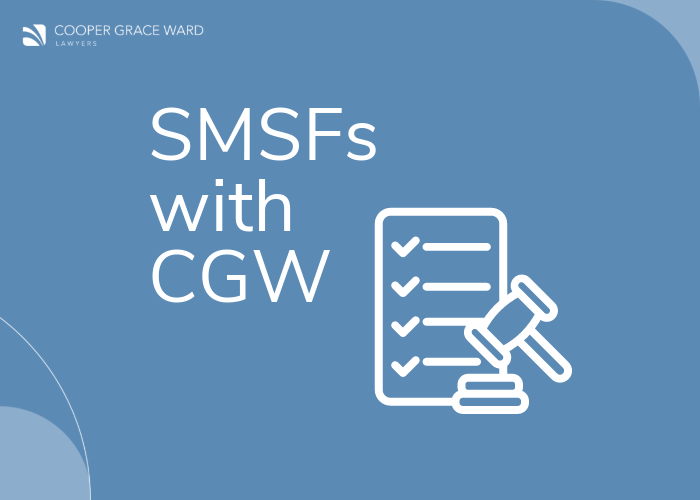What do we know so far?
On 28 November 2024, the Treasury Laws Amendment (Mergers and Acquisitions Reform) Bill 2024 was passed by Federal Parliament. The Bill will commence from 1 January 2026 and will replace Australia’s existing merger clearance laws with a mandatory notification process.
Australia’s current merger clearance laws do not mandate parties to an acquisition that may substantially lessen competition to obtain approval from the Australian Competition and Consumer Commission before completion of the transaction. However, parties to acquisitions that do not obtain voluntary approval but are found to substantially lessen competition may be subject to penalties and are at risk of demerger orders.
The Bill will replace the current voluntary notification system with a mandatory notification process that requires certain acquisitions of shares or assets to be approved by the ACCC before they can take effect.
What are the key features of the mandatory notification process?
The new merger clearance laws will take effect and apply to relevant acquisitions on a mandatory basis from 1 January 2026, which will simplify the merger control framework for relevant parties going forward.
A summary of the key features of the new mandatory notification process is set out below:
- Control: An acquisition may be notifiable if it gives the purchaser ‘control’ of the target, being the direct or indirect capacity to determine any policies of the target. Following stakeholder feedback, the definition of control will more closely align with the Corporations Act 2001 (Cth).
- Notification thresholds: If an acquisition gives the purchaser control, then the ACCC will only need to be notified for assessment purposes if the acquisition meets one of the thresholds to be prescribed in the regulations. See below for further information.
- Ministerial discretion: The Minister will be able to determine (following consultation) whether certain transactions should be notifiable or exempt. For example, the introduction of notification requirements if a target is a non-listed body corporate and the acquisition results in holding more than 20% voting power.
- ACCC review phases: Once notified, an acquisition may be subject to two stages of review and a public benefit assessment by the ACCC. The ACCC may approve a notified acquisition at any of the stages and such approval may be granted with or without conditions.
- Phase 1: The ACCC will conduct an initial ‘Phase 1’ review of the notified acquisition (which is proposed to last up to 30 business days). If the ACCC is satisfied that the notified acquisition would, or would be likely to, substantially lessen competition, then the ACCC may either approve the acquisition subject to conditions or conduct an in-depth ‘Phase 2’ review.
- Phase 2: If the ACCC does not approve an acquisition following the ‘Phase 1’ review, then the ACCC will conduct an in-depth ‘Phase 2’ review of the acquisition (which may last up to 90 business days). If the ACCC is satisfied that the acquisition would, or would be likely to, substantially lessen competition, then the ACCC may either approve the acquisition subject to conditions or reject the parties’ application.
- Public benefit: If the ACCC rejects a notified acquisition following a ‘Phase 2’ review, then the relevant parties may apply for approval on the basis that the acquisition is of substantial public benefit that would override any detriment it would otherwise cause. It is proposed that a public benefit review may take up to 50 business days.
- Serial acquisitions: The ACCC may (not must) assess the combined effect of the notified acquisition and certain acquisitions by the relevant parties within the three-year period prior to the notification.
- Fees: The regulations may prescribe a separate filing fee for a Phase 1 review, a Phase 2 review and a public benefits review, which will need to be paid by the notifying parties before the ACCC can make its determination. These filing fees are yet to be released for public consultation; however, the Treasury has previously anticipated the filing fees will be between $50,000 and $100,000.
- Voided acquisitions: If a notifiable acquisition has not been notified, or has been notified but not finally approved, yet is put into effect, the ACCC may seek court orders voiding the acquisition.
- Excluded acquisitions: Certain acquisitions that are not considered to affect competition in a market will not be notifiable acquisitions. For example, this includes acquisitions that:
- do not give a purchaser control
- are internal restructures
- are made by administrators, receivers, receivers and managers, or liquidators.
- Responsibility to notify: If you are the principal party to an acquisition, it will generally be your responsibility to notify the ACCC if your transaction satisfies any of these thresholds. However, any of the parties involved may do so.
- Waiver applications: The Bill introduces a power that will allow the ACCC to waive the obligation to notify an acquisition. The process for parties to apply for a notification waiver will be set out in subordinate legislation in due course.
- Voluntary notification period: From 1 July 2025 until 31 December 2025, parties to an acquisition that will be notifiable under the new regime will be able to voluntarily notify the ACCC and opt-in to the new merger clearance process for that acquisition.
The Bill will also clarify the meaning of ‘substantially lessening competition’ for the purposes of merger assessments only, to include creating, strengthening or entrenching a substantial degree of power, in addition to conduct that prevents or hinders competition.
What are the notification thresholds?
It is currently proposed that the notification thresholds will operate so that only one of the thresholds will need to be met for an acquisition to be notifiable. While the regulations that will set out these notification thresholds are not yet finalised, the Federal Government has indicated that the monetary thresholds will consist of the following (subject to certain exemptions):
| Economy-wide monetary threshold | An acquisition will be notifiable if:
|
|
| Very large acquirer threshold | An acquisition will be notifiable if:
|
|
| Three-year cumulative turnover threshold (serial acquisitions) | For medium to large sized mergers, an acquisition will be notifiable if there is:
|
For very large acquirers, an acquisition will be notifiable if involving:
|
Importantly, through subordinate legislation, the Treasurer will have discretion to make targeted notification requirements for certain acquisitions or industries. For example, in certain supermarket mergers, or acquisitions of an interest above 20% in an unlisted or private company (where one of the involved companies has more than $200 million in turnover).
The Government is also exploring a targeted screening tool that could assist the ACCC with identifying certain acquisitions in select regions and industries. It is currently proposed that businesses that meet a minimum threshold in these regions and industries would need to register with the ACCC to administer the screening tool.
What will the reforms mean for mergers and acquisitions going forward?
These reforms will mean that, if you are a party to a potential notifiable acquisition, you will need to carefully consider how the new laws will impact the transaction process, particularly in relation to timing and costs.
Legal and professional advisers will also need to ensure that transaction documents relating to notifiable acquisitions contemplate the need for the parties to obtain the ACCC’s approval before the acquisition takes effect.
What happens next?
While the Bill has now passed through Parliament, there are multiple details still yet to be finalised, including notification thresholds, form requirements, relevant fees and waiver processes.
We will provide further updates as and when additional announcements are made. In the meantime, please contact David Grace or Lochlann Woodall if you wish to discuss any of the matters contained in this article.






